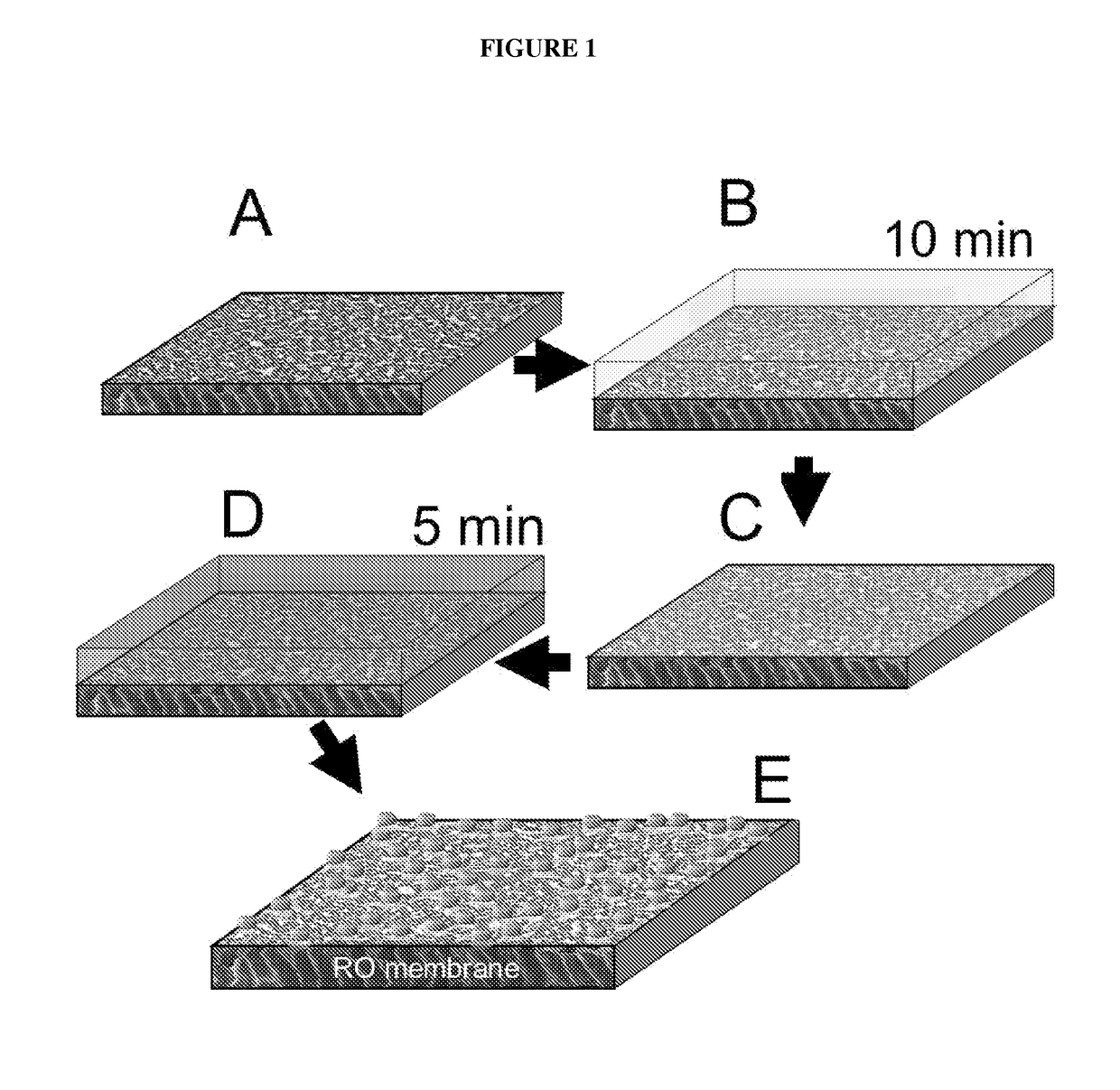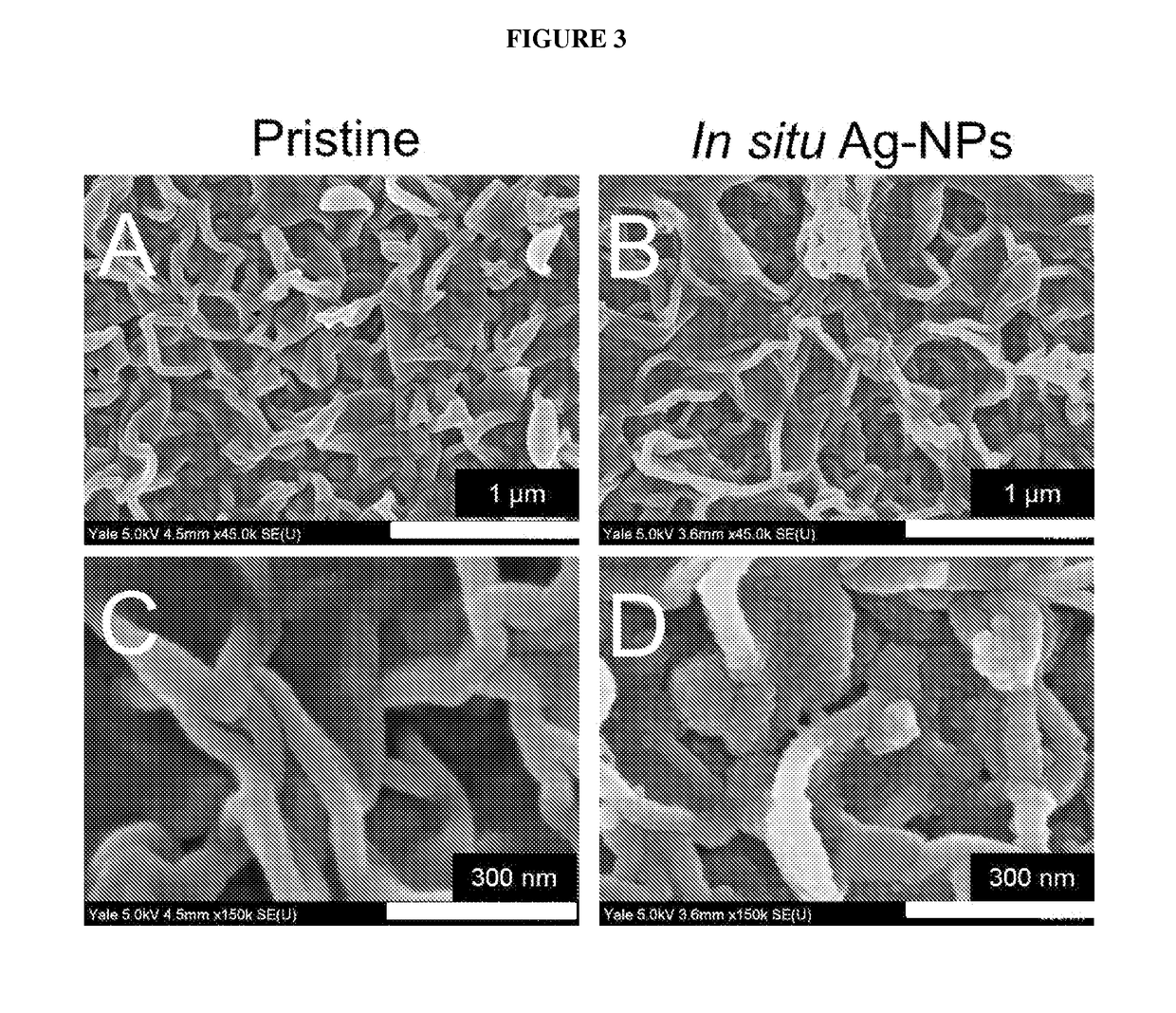In situ formation of biocidal metal nanoparticles on thin-film composite reverse osmosis membranes for biofouling mitigation
a biocidal metal nanoparticle and reverse osmosis membrane technology, applied in reverse osmosis, membranes, coatings, etc., can solve the problems of increasing hydraulic resistance to permeation, biofilm enhanced osmotic pressure, and subsequent decline in product water flux and salt rejection, etc., to achieve the effect of reducing total biovolume, preventing biofilm formation, and reducing total biovolum
- Summary
- Abstract
- Description
- Claims
- Application Information
AI Technical Summary
Benefits of technology
Problems solved by technology
Method used
Image
Examples
Embodiment Construction
[0035]The present invention relates to a method for the in situ formation of biocidal metal nanoparticles on a water purification membrane. More specifically, the method includes reacting a solution of a salt of a biocidal metal with an active layer of the membrane, discarding the biocidal metal salt solution such that a thin layer of the biocidal metal salt solution remains on the membrane surface, reacting a reducing agent solution with the active layer of the membrane and the thin layer of the biocidal metal salt solution thereby forming a biocidal metal nanoparticle-modified membrane, removing the reducing agent solution, and rinsing the biocidal metal nanoparticle-modified membrane. The method is most preferably performed at ambient conditions.
[0036]Any biocidal metal can be used in the method of the present invention, including, but not limited to, copper, gold, silver, selenium and zinc. Any salt of a biocidal metal can be used in the method of the present invention, includin...
PUM
| Property | Measurement | Unit |
|---|---|---|
| pressure | aaaaa | aaaaa |
| pH | aaaaa | aaaaa |
| water permeability | aaaaa | aaaaa |
Abstract
Description
Claims
Application Information
 Login to View More
Login to View More - R&D
- Intellectual Property
- Life Sciences
- Materials
- Tech Scout
- Unparalleled Data Quality
- Higher Quality Content
- 60% Fewer Hallucinations
Browse by: Latest US Patents, China's latest patents, Technical Efficacy Thesaurus, Application Domain, Technology Topic, Popular Technical Reports.
© 2025 PatSnap. All rights reserved.Legal|Privacy policy|Modern Slavery Act Transparency Statement|Sitemap|About US| Contact US: help@patsnap.com



